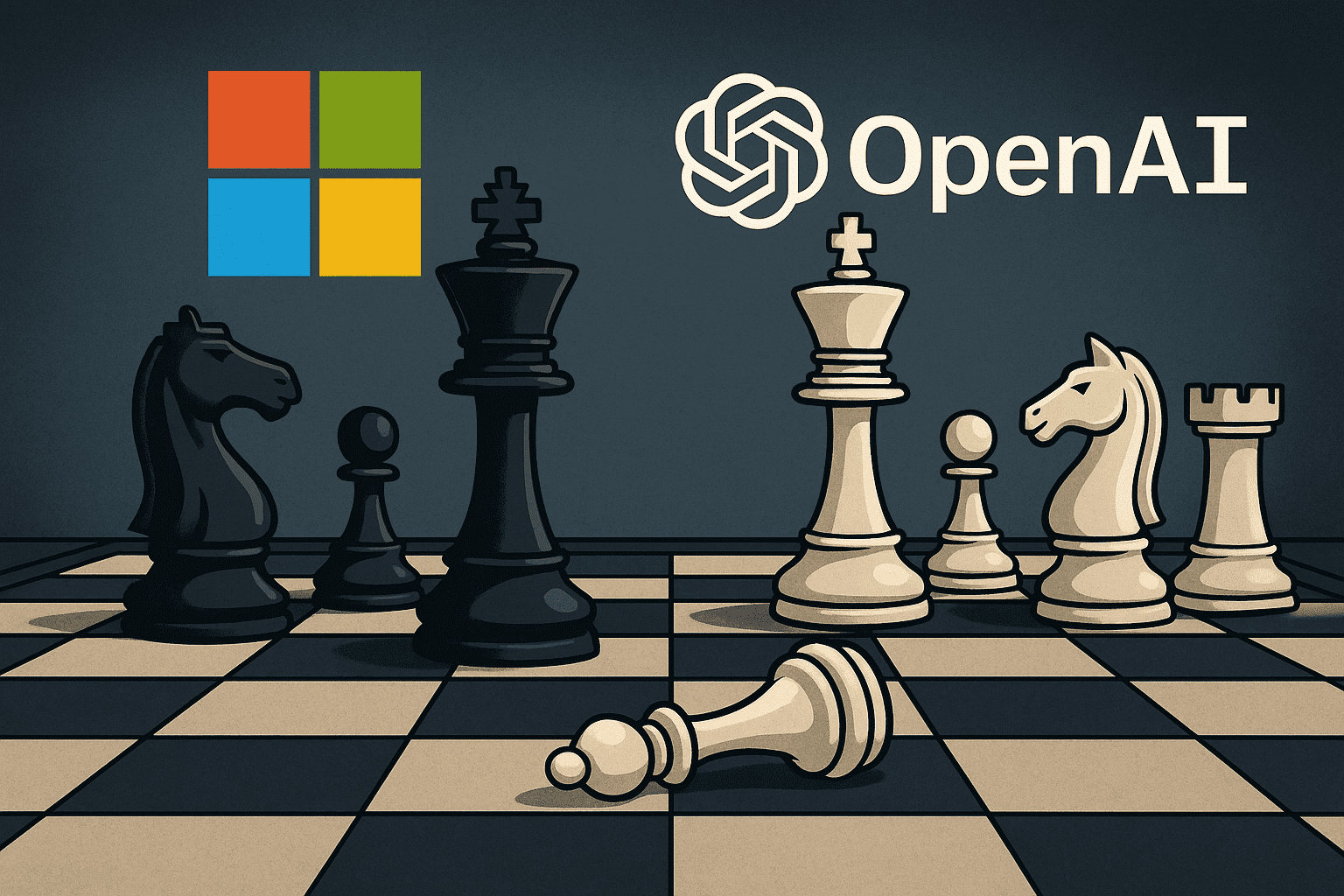In June 2025, a string of media leaks surfaced regarding the partnership between OpenAI and Microsoft, sparking speculation across the tech and financial worlds. The leaks hinted at potential federal regulatory scrutiny of Microsoft’s licensing agreement with OpenAI, suggesting possible antitrust violations. While these disclosures appear to concern regulatory oversight, they may be part of a deeper, calculated strategy by OpenAI: to pressure Microsoft into more favorable terms ahead of a potential IPO and renegotiation of their long-term agreement.
1. The Backdrop: IP Clashes and Mustafa Suleyman’s Exit
The tension didn’t start in June. Earlier in 2025, Mustafa Suleyman — OpenAI’s head of the O1 Reasoning initiative — resigned under unclear circumstances. Insiders reported a major dispute between Suleyman and OpenAI CEO Sam Altman over the handling of core intellectual property. Suleyman allegedly wanted foundational reasoning models to remain open and accessible, while Altman was pushing for exclusive commercial control — especially where Microsoft’s licensing rights came into play.
This debate around who owns the intelligence layer of AGI didn’t just cost OpenAI a high-profile hire. It laid the foundation for what appears to be a broader power struggle over the future of its IP — and who gets to profit from it.
2. IPO Pressure and Microsoft’s Expanding Footprint
As OpenAI explores an IPO, tensions with Microsoft have intensified. Microsoft holds a multibillion-dollar stake in OpenAI and exclusive rights to commercialize its models via Azure. According to internal sources, Microsoft has been pushing for even deeper integration — including access to technology from the recent Windsurf acquisition, which focused on agentic reasoning and autonomy.
OpenAI, on the other hand, reportedly seeks to retain and isolate new IP to support its market valuation. This disagreement may be what prompted the recent media leaks. If public perception turns against Microsoft — and if regulators take notice — OpenAI could gain leverage in contract renegotiations, while also buying time and independence ahead of any public listing.
For-Profit Restructuring Dispute
Compounding this conflict is OpenAI’s ongoing effort to transition from its capped-profit model to a more traditional public-benefit corporation structure — a move aimed at unlocking large-scale outside capital and preparing for a potential IPO. This restructuring, however, requires Microsoft’s approval under existing contractual agreements.
Microsoft is reportedly delaying that approval, seeking to increase its equity stake to 33% in exchange for surrendering future profit rights. OpenAI views this as an aggressive attempt to entrench control, effectively stalling its plans to attract new investors and grow independently.
The financial stakes are enormous: the delay is said to be jeopardizing as much as $20 billion in planned investments — critical funding that OpenAI needs to scale operations and remain competitive against rivals like Google DeepMind and Anthropic. As a result, OpenAI’s leadership has been exploring alternative levers — including public pressure through media leaks — to break the deadlock.
3. Why Leaks Hurt Microsoft More Than OpenAI
Microsoft, unlike OpenAI, is a publicly traded company. Any report of potential antitrust violations, exclusivity clauses, or unfair access to transformative AI could spook shareholders and draw regulatory fire. In contrast, OpenAI remains a hybrid nonprofit-capped profit entity with opaque internal governance.
This power asymmetry means that media leaks disproportionately damage Microsoft’s position. Even the perception of impropriety in AI partnerships — especially under the current regulatory climate — is enough to invite scrutiny and shift negotiation dynamics.
4. The Altman Factor: History of Strategic Betrayal
Sam Altman’s role in these developments cannot be overlooked. Known for his ability to navigate — and manipulate — power structures, Altman has a history of calculated pivots:
- In 2018, he reportedly maneuvered Elon Musk out of OpenAI after a strategic disagreement over its mission.
- In 2023, after being briefly ousted by OpenAI’s board, Altman returned with support from Microsoft and nearly the entire staff — a reversal that raised eyebrows globally.
- In 2024, OpenAI lost key alignment researchers like Ilya Sutskever and Jan Leike, both of whom cited concerns over shifting priorities under Altman’s leadership.
Now, Altman appears to be playing his boldest hand yet — potentially pressuring Microsoft through regulatory leaks and public narratives. If true, this could be a brilliant tactical move — or a dangerously short-sighted gamble.
5. Strategic Transparency or Reckless Provocation?
From one perspective, OpenAI’s moves look like a principled stand to protect its autonomy and ensure responsible development. From another, they resemble a media-driven attempt to destabilize a key partner in order to gain better terms.
For Microsoft, the stakes are existential. For regulators, this is a gift. And for Altman, it’s just the latest chapter in a long play for power in the age of artificial intelligence.
But either way, one thing is clear: the age of silent negotiation is over. In AI, even the contract talks make headlines.
